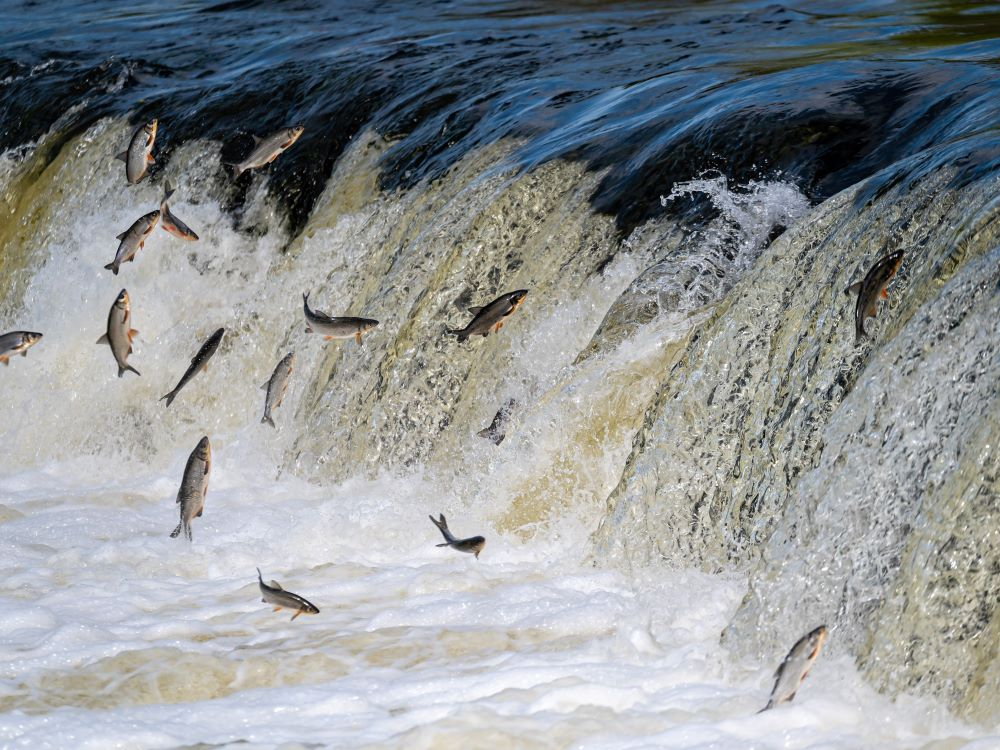Wildlife populations have declined by 73% over the last fifty years, and particularly alarming is the 85% reduction in freshwater species. This is highlighted by WWF (World Wide Fund for Nature) in the 2024 edition of its Living Planet Report, a detailed analysis of the state of global biodiversity, drawing attention to the serious threats facing rivers, lakes, and wetlands.
The report monitors average changes across over 30,000 populations of more than 5,000 vertebrate species, providing an important overview of the health of terrestrial ecosystems. The latest edition, published in October, paints a sobering picture, showing a dramatic decline in wildlife populations between 1970 and 2020. To further explore the findings of the report, Renewable Matter spoke with Jeff Opperman, WWF’s Global Lead Freshwater Scientist and one of the report’s Co-authors.
What are the main causes of this decline in freshwater ecosystem and freshwater biodiversity?
Freshwater ecosystems, and the species that rely on them, have been severely impacted by human activities. There's a saying, "everything flows downstream," which reflects how interconnected these impacts are. Cities, farming, and energy generation, like hydropower, all contribute to the pressures on freshwater systems. Many studies have looked at the main drivers threatening freshwater ecosystems: these include dams, levees, and other water management infrastructure that fragments, diverts, or depletes water resources. Another major factor is pollution, particularly from agriculture. Much of this pollution comes from non-point sources, where runoff from large agricultural areas — used to grow essential food − carries excess soil, fertilisers, and chemicals into streams, rivers, and estuaries. If agriculture is not managed properly, this runoff can severely harm ecosystems, disrupting food production from rivers and estuaries, which in turn affects industries like seafood production.
Are ecosystem services like water purification and flood control also impacted by the loss of biodiversity and degradation in freshwater ecosystems?
Absolutely. The same factors driving the loss of biodiversity, as highlighted in the Living Planet Report, are also affecting the ecosystem services we rely on. For example, river fragmentation disrupts biodiversity but also hampers natural flood control. When rivers have space to overflow into floodplains, these areas absorb excess water, helping protect communities during floods. The loss of floodplains, which are crucial for both freshwater species and flood control, clearly shows how the same forces degrading ecosystems are also increasing risks for people.
Are there any species that are especially affected by the degradation of freshwater ecosystems?
Migratory fish are a good example. These fish either move within river systems or migrate between the ocean and rivers, with salmon being one of the most well-known. As I mentioned earlier, one of the major threats to freshwater species is the construction of dams, which fragment rivers and block migratory routes. This has led to a dramatic 80% decline in migratory fish populations since 1970. These species are crucial, not only for biodiversity but also for food security. For instance, wild salmon was once a vital food source for Indigenous communities across Canada, the US, and other regions of the Northern Hemisphere. While you still see salmon in grocery stores today, most of it comes from aquaculture, not wild stocks. In rivers like the Mekong in Southeast Asia, migratory fish make up a large portion of the fishery people depend on for food. The rapid decline of these fish is a stark indicator of both ecological and human challenges.
Have there been efforts to remove dams or other obstacles that block rivers and harm ecosystems?
Yes, this is one of the success stories we should celebrate and learn from for future solutions. An example is the Klamath River in Northern California and Southern Oregon, US, which recently made headlines for the largest dam removal project in history. Four large hydropower dams were removed after decades of efforts and negotiations involving tribes, dam owners, conservation organisations, state and federal officials, and local communities. This removal will significantly help restore salmon populations, which are vital for food, livelihoods, and culture. The restoration of the river is not only a huge win for the salmon and the ecosystem but also aligns with efforts to reverse biodiversity loss, as tracked in the Living Planet Report. The hope is that this project will "bend the curve" (reversing the declining trend in salmon populations and driving an upward recovery that will be seen in the graphical representation of the curve, editor’s note) by increasing salmon populations and showing how nature can be restored. It's a rare win for both wildlife and the local people who depend on the river.
So, does this benefit everyone?
Yes, it does. While removing the dams means a loss of electricity from hydropower, these dams were quite old and would have required significant investment to keep them efficient. At the same time, California is rapidly expanding wind and solar energy, adding far more capacity to the grid than what’s being lost from the dams. In fact, around 80% of all new power generation now comes from wind and solar. This shift is part of a broader transformation in energy systems, allowing us to rethink not only how we produce energy but also how we manage and restore our river systems.
How can Nature-based Solutions be applied to freshwater ecosystems to enhance the wellbeing of freshwater biodiversity?
Nature-based Solutions benefit both people and nature. Some of the best examples focus on water-related challenges. For instance, forests and wetlands play a critical role in ensuring clean water. When healthy forests and wetlands are upstream from water sources, they act as natural filters. A good example is New York City, where substantial investment was made to maintain the health of the watershed, and where forests, wetlands, and streams were essential. This natural infrastructure helps keep the city’s water supply clean.
Flood management is another area where Nature-based Solutions are useful. Instead of relying entirely on levees, which confine rivers and can fail, restoring floodplains allows rivers more room to spread out during floods. This allows wetlands and floodplains to absorb excess water, lowering flood risks for surrounding communities. Additionally, connected river and floodplain systems are among the most productive and biodiverse ecosystems on the planet. So, by giving rivers space, we simultaneously reduce flood risk, support biodiversity, and restore healthy ecosystems. It's a win-win approach that makes systems more resilient and flexible for both people and nature.
Are you optimistic about the outcomes of COP16 in Cali, especially regarding freshwater biodiversity?
I believe it would be a significant outcome from COP16 if countries commit not only to protecting existing ecosystems but also to restoring what we have lost. The concept of "bending the curve" is crucial — not just halting the decline of nature, but actively reversing it and helping nature come back. As countries consider how to adapt to climate change and protect their populations, maintaining resilient river systems becomes essential. Furthermore, during COP16, there will be a focus also on the Freshwater Challenge, an initiative designed to accelerate the restoration of 300,000 kilometres of degraded rivers and 350 million hectares of wetlands by 2030, as well as conserve intact freshwater ecosystems.
What other topics do you think are important to address?
One key issue I'd highlight is the need for a transition that is both fast and careful. About a year ago, we worked with the Boston Consulting Group (BCG) on the report Building a Nature-Positive Energy Transformation to address concerns that the renewable energy transition might further harm nature. For example, people were talking about solar panels displacing forests or the environmental damage caused by mining for critical minerals. In our report, we compared two futures: one where we achieve the renewable transition and another where we remain reliant on fossil fuels, a business-as-usual future. We examined 30 different metrics, including biodiversity, human safety, jobs, and more—factors that should matter to decision-makers. The results showed that in almost every metric, a successful renewable transition leads to a far better future. It is not just about hitting climate targets, but about improving outcomes for both people and nature. Even though mining remains a concern, the report showed that a renewable transition would lead to 30% less land being actively mined, with a 95% reduction in land that is mined for energy, largely because coal mining would be phased out. The key takeaway from this report is that while the renewable future is much better for both people and nature, we need to manage the transition carefully. And if we're careful, it allows us to go fast without conflict. So we can do both.
This article is also available in Italian / Questo articolo è disponibile anche in italiano
Cover image: Envato



